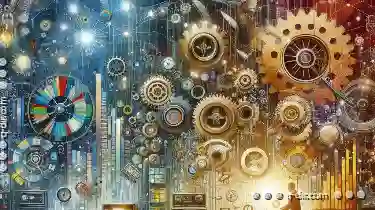From correcting colors to adding artistic effects, they offer a multitude of possibilities that can transform basic snapshots into stunning masterpieces. ...
 However, as with any powerful tool, there is a risk when over-reliance on filters becomes the norm rather than the exception. This blog post will explore the hidden drawbacks of an over-reliance on image editing software filters and how to strike a balance for optimal results. In the realm of digital photography, filters have become an essential tool for enhancing images.
However, as with any powerful tool, there is a risk when over-reliance on filters becomes the norm rather than the exception. This blog post will explore the hidden drawbacks of an over-reliance on image editing software filters and how to strike a balance for optimal results. In the realm of digital photography, filters have become an essential tool for enhancing images.1. Understanding Filters: The Basics
2. The Drawbacks: Why Over-Reliance Can Be Detrimental
3. Balancing Filter Use with Manual Adjustments
4. Conclusion
1.) Understanding Filters: The Basics
Before diving into the potential pitfalls, let's briefly recap what filters are and why they are used in digital photography. Filters are essentially plugins or applications that can be applied to an image after it has been captured. They can adjust exposure, contrast, colors, sharpness, and many other aspects of an image. Some popular examples include noise reduction filters for low-light conditions, color correction filters to balance hues, and artistic filters like vignettes or light leaks to add unique styles.
2.) The Drawbacks: Why Over-Reliance Can Be Detrimental
1. Loss of Originality
One significant drawback is the loss of image originality. When you heavily rely on filters, you might end up with images that look overly processed and generic, lacking personal expression or authenticity. This can be especially problematic when sharing your work online where others may view your edits as unoriginal due to their uniformity.
2. Misrepresentation of Reality
Filters can distort the reality captured in an image by altering colors, lighting, and other elements beyond what our eyes might see under natural conditions. Over-reliance on filters can result in a misinterpretation of what was originally perceived. This becomes especially important when sharing images from different locations or times of day where the real world appearance should guide your edits.
3. Creativity Limitation
Relying solely on filters to achieve desired effects might limit your own creative skills and understanding of photography techniques. By editing every image through a filter, you may miss out on learning how to adjust camera settings or apply post-processing manually, which could lead to greater proficiency in photography overall.
4. Technical Disregard
Heavy use of filters can cause one to overlook important aspects of photography like exposure compensation, white balance adjustments, and focal point choices. These are fundamental elements that cannot be fully compensated for through digital editing without some loss of quality or accuracy.
3.) Balancing Filter Use with Manual Adjustments
To mitigate these drawbacks, it’s crucial to strike a balance between using filters and mastering manual image adjustments:
1. Experimentation and Learning
Take the time to learn how to manually adjust camera settings and understand the impact of exposure, aperture, shutter speed, ISO, and focal length on your images. This will give you a deeper understanding of photography and enable you to make more informed decisions about when and how to use filters.
2. Use Filters Sparingly
Apply filters sparingly as an enhancement tool rather than a default editing step. Start with basic adjustments in-camera using settings that best represent your intended vision, then consider adding filters for artistic effects once you’ve established the foundational look of your image.
3. Develop Visual Critique Skills
Develop the ability to visually critique images based on lighting, color balance, composition, and other aesthetic elements without relying on digital editing tools. This skill will help you make better decisions about what requires filtering and what can be achieved through manual adjustments.
4. Showcase Unedited Images
Encourage others to appreciate your work not only for the filters applied but also for the thought process behind each image, including why certain edits were or were not made manually. This approach will shift focus from technical skills to creative vision and interpretation.
4.) Conclusion
While filters are incredibly powerful tools that can significantly enhance images, over-reliance on them can lead to a loss of originality, misrepresentation of reality, limited creativity, and disregard for fundamental photography techniques. By understanding these potential drawbacks and practicing the art of balancing filter use with manual adjustments, you can elevate your photography skills while preserving artistic integrity and versatility in your visual storytelling.

The Autor: / 0 2025-05-10
Read also!
Page-

Your Go-To: Columns File Management
Welcome to the world of efficient file management, where organization meets functionality. In this blog post, we will delve into the various view and ...read more

Why Pasting Files Sometimes Triggers Permission Errors
When it comes to working with files and folders, copying and pasting is one of the most common operations we perform. However, you may have ...read more

How to Export Previews as Images
Welcome to this comprehensive guide on how to export previews as images across various applications. Whether you are a designer, developer, or just ...read more